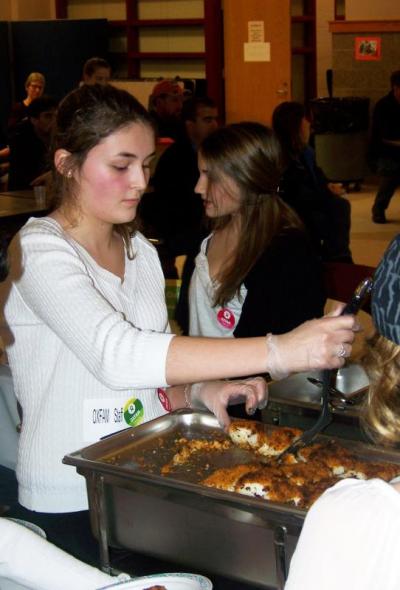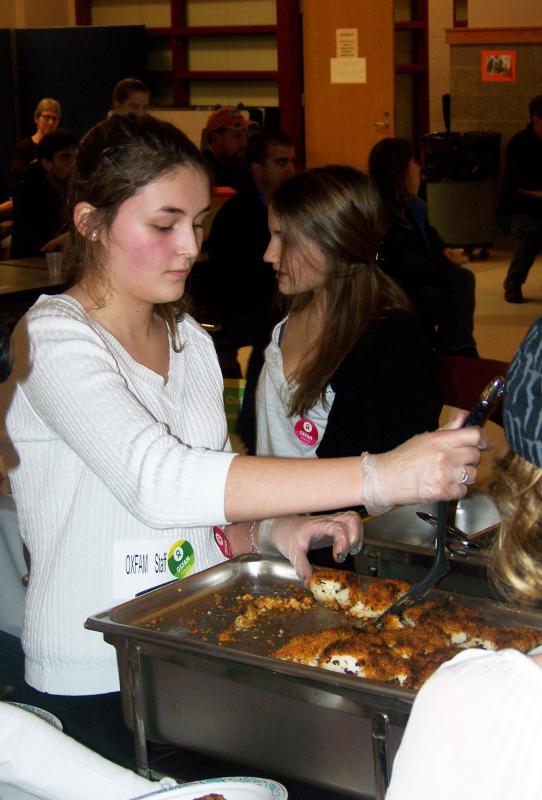Middle school hunger banquet fills minds, not stomachs
It was feast or famine for Old Rochester Junior High School students and their parents on Thursday night as they picked out a single strip of paper that determined their culinary fate.
The papers assigned guests a meal based on one of three income levels, low, middle or high.
Diners then took their seats at a table – for the fortunate - or sat in a chair at the edge of the cafeteria to wait for a simple meal of white rice, water and nothing else.
“This is very humbling,” said Elise Frangos, assistant superintendent of instruction and curriculum. Frangos, along with Superintendent Doug White, both drew low-income tickets for the meal.
It was all part of the junior high school’s first Oxfam Hunger Banquet. Oxfam, an international organization, works to combat poverty and hunger. Money raised at the banquet will be used to feed the hungry in the community.
Frangos said the social experiment capped months of planning and classroom instruction. Geography, mathematics, science and social studies lessons made students more aware of the problem that climate change poses to the world’s food supply. And how that affects billions of people living in poverty.
“This is a great event and it’s the ultimate application of learning how to use science to solve social problems,” Frangos said.
The cafeteria was divided according to income status. The wealthy sat at tables placed in the center of the room and ate a complete meal of fish, beans and rice. Students explained the people seated there represented the 15 percent of the world’s population making more than $12,000 per year.
Those making a middle income also sat at tables, but their meal consisted of just beans and rice. Students said people seated there represented those who get by on $2.70 a day.
The banquet was designed to focus attention on how climate change has led to pervasive hunger and malnutrition.
“We’re trying to get people to act,” said Kathryn Gauvin, a science teacher at the school. Gauvin, along with Marion School Committee member Christine Winters, helped students plan the event.
Winters was quick to say students were in charge.
“It’s important to note that everything you see here was planned by the students,” she said. Three teams of students, each assigned a specific task, worked hard to make the night a success, she said.
Winters also noted that the meal was an excellent way to bring together a number of interdisciplinary subjects such as mathematics, science and other areas.
Before dinner students showed off the results of class research projects.
For the event, student Madison Pedro looked into carbon footprints, which measure how much greenhouse gas a single person, organization or machine emits into the atmosphere.
Pedro’s chart showed the amount of greenhouse gases that are associated with a particular activity. More importantly she said her research led her to consider how to make those footprints smaller.
“I learned how to figure out the size of a carbon footprint and ways to reduce it,” she said.
The night also featured speaker Annette Brickley who is the education director at the Ocean Explorium in New Bedford. Brickley spoke about climate change and the immense impact it’s having on the environment. She explained to students that the more greenhouse gases that get into atmosphere the warmer the plant gets.
“Any change in the earth’s systems will have an effect on all parts of the system,” she said.

















